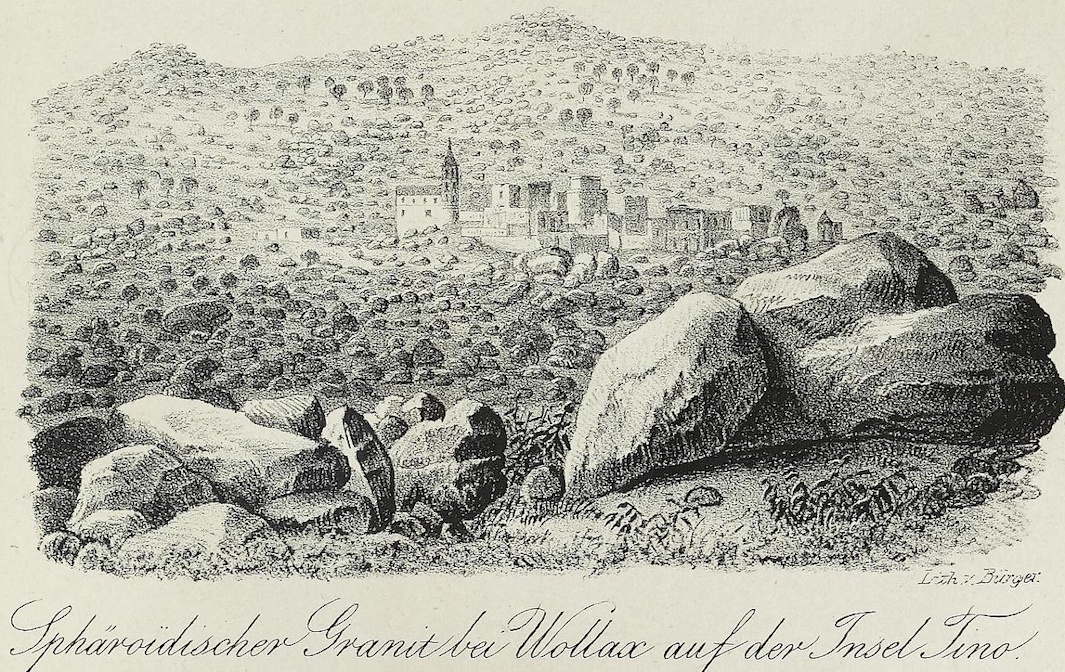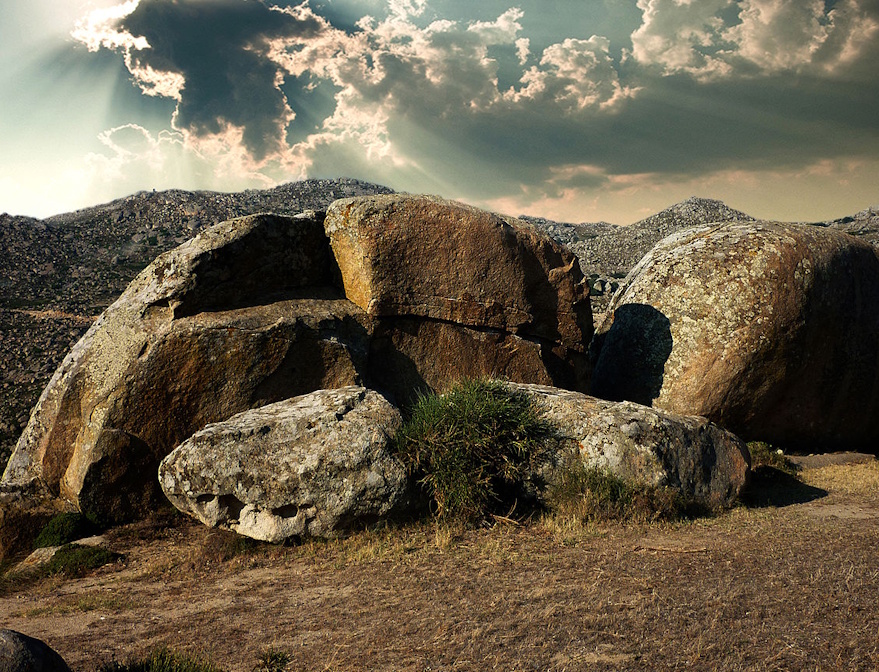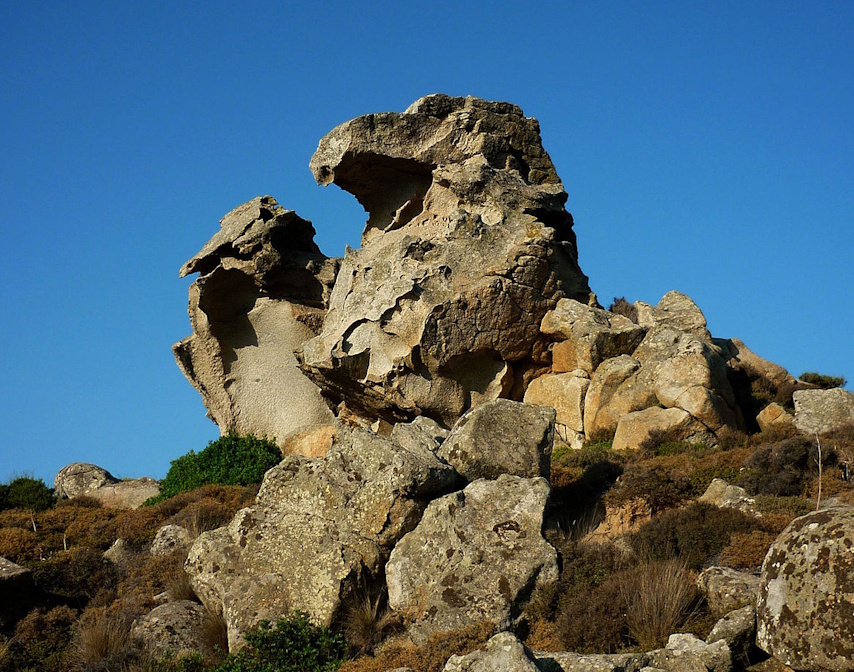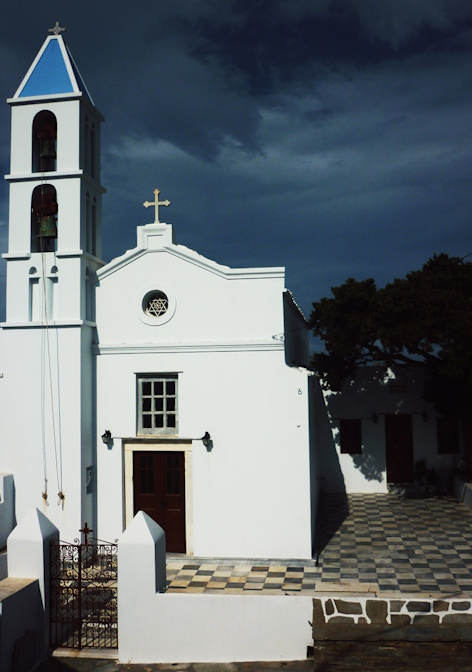Volax . . .
The village of Volax is mentioned in a manuscript of the Catholic bishop as Vulacus.
The medieval Catholic village with about 53 permanent inhabitants (2011 census), located at an altitude of 284 metres on a small plateau in the centre of Tinos, surrounded by stones and large spherical granite rocks of volcanic origin. It was and still is the village of basket weaving, with which it earns its living.
We do not know if there were important people who went beyond the narrow confines of the village, at least until the 18th century. Nevertheless, we find the marble coat of arms of the House of the Venetian Patricians of Valier. Among others, this house produced two Venetian Doges in the 17th century: the 102nd Doge Berticci Valier (1656-1658) and the 109th Silvestro Valier (1694-1700) with his own coins. In the same house, a small cannonball from an old siege bomb (probably from the castle of Exomburgo) was found in the cellar after reconstruction, which had been used as building material for the walls.
In the first decade of the 16th century, the village belonged to the 18th administrative unit of Tinos, which was made up of the three neighbouring villages (Cicaladho, Cumaro, Vulacus), although there were obviously differences in the composition of the villages.
The archives of the Catholic archdiocese record that Volax contributed 407 grosia to a collection of the island's Catholic parishes in support of the revolutionary struggle (1823). (G. Dorizas, Tinos under Turkish rule, p. 314)
A similar list (colletta) from 1940, after the torpedoing of the cruiser Elli by the Italians, states that the village contributed 250 drachmas for the construction of the new ‘Elli’.
Volax made its own lively contribution to both clergy and monasticism, the most famous of all being the priest Don George Fyrigo (1877-1940). We do not yet know much about the presence of inhabitants of the village who took an active part in local affairs. In the register of the old municipality of Sosthenio we find a citizen from Volax with the status of secretary, with a year of birth of 1840, but without a place of service.
Today, there is a small folklore museum in the village, which is open from Easter to the end of October, and a stylish open-air stone theatre with 300 seats, where various cultural events take place in summer. In the Easter period, climbers from all over the world meet up for bouldering. There are two restaurants in the village and several shops selling baskets and other traditional products from Tinos Island.
There are two festivals every year. On Easter Thursday in ‘Panagia Kalaman’, where the ‘Maranda’ is celebrated with skewered lambs, wine and music, and on 8 September, when the village celebrates the birth of the Virgin Mary.
Historical information
It is not possible to determine when the church of the Nativity of the Virgin was built, but it is one of the oldest on the island. It is probably post-Byzantine and certainly existed in the Middle Ages. However, it is possible that the area was inhabited more than 2,000 years before Christ, as some pieces of obsidian from this period have been found.
The first official mention of the village of Volax comes from the state documents of the Venetian administration from 1618 (ASVe, Duca Di Candia, Busta 92), which were found in Italy. Another official document can be found in the list of Protoyer in the pastoral visit of Bishop Nicholas Rigos on 13 February 1642. In November/December 1700 (Codex 4 AKT) there were 58 settlements on Tinos, one of which was Volax. In Relation d' un voyage du Levant (J. Pitton De Tournefort, Paris 1717), Volakas is listed among the most important villages of Tinos.
The parish codex of the village Libro Maestro Della Chiesa Parrocchiale Di Vulacus (1849-1900) is in the archives of the Catholic Archdiocese in Xinara and ‘survived’ thanks to the good fortune of Father Markos Foskolos. It is divided into eight parts, the most important of which are the register of village churches (Obblighi de Messe, e Lampadi delle Chiesolle appartenenti alla Chiesa Parrocchiale di Vulacus), the deaths (Libro dei Morti) and the baptisms, which, sewn together from an older codex of 38 pages, begin with the year 1749 (Libro de' Battesimi).
 |
 |
Left: The village of Volax (engraving from 1840)
Right: Characteristic rocks of the volcanic landscape
Due to his particular geological interest, there have been individual visits to the village since the end of the 18th century and especially since the first years after the Revolution, the most famous being the French scientific expedition of J. B. Bory de Saint Vincent (1834-1836) and that of the German geologist Karl Gustav Fiedler (1835-1837), who travelled most parts of the then Greek kingdom until Otto awarded him the Cross of the Order of the Hellenic Redeemer and appointed him director of the Greek mines.
At the end of the 1990s, the University of Athens submitted a memorandum to the International Union of Geological Sciences to preserve this geomorphological heritage.
Name
The village owes its name to the large granite rocks that surround it and are part of the settlement itself: from the place with the rocks to the Volakos. The Tinian idiom has a habit of ‘removing’ letters, and as the names were passed on orally, a change from Volak(u)s to Volak's > Volaks occurred. The ‘difficult pronunciation’ Voulak(u)ς was first rendered in Latin as Vulacus and later in Greek as Volakas.
The exact phonological rendering was a related topic. Despite the same root word (vola-), the ending varies in different documents (wills, trusts, purchases of land or other assets, church records).
 |
 |
Left: Landscape of Volax
Right: The parish of the village of Volax, built in 1816
Here are some examples of the 38 different variants that have been counted: Vulacus (1642 Nicholas Rigos, Bishop of Tinos), Volakos (1717 Joseph Pitton de Tournefort, botanist, traveller), Volasco (1756 Peter Martys de Stefani, Archbishop of Paranáxia), Vollakos (1809 Markakis Philippos Zallonis, doctor, writer), Wollax (1840 Karl Gustav Fidler, geologist, traveller), Volax (1871 Xavier Landerer, chemist, academic), Volaccos (end of 19th century, 1871 anonymous Ursa Ursina). century, 1871 anonymous Ursuline nun), Volakas (1888 Dimitrios Mavromaras, teacher)
The name of the village appears in different variants on various maps:
In the earliest record of the village on a map, it appears as Vollakos (1809) (Marcaky Zallony, Voyage à Tine, l‘ une des îles de l’ Archipel de la Grèce, engraved by J.D. Barbié du Bocage). In another map printed in Paris (engraved by J. B. Bory de Saint Vincent) it is listed as Bollakos (1838). As Bollax on the map printed in Athens in 1892 (engraved by N. Stavla).
Another question about the correct spelling arose in the mid-1990s and concerned the use of ‘Omikron’ or ‘Omega’ in the name Volax. The ‘answer’ was given by the work of Hesychius and is ‘Omega’ (Βώλαξ).